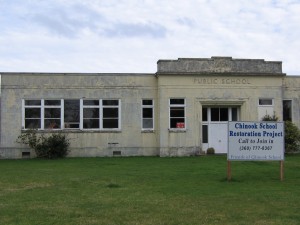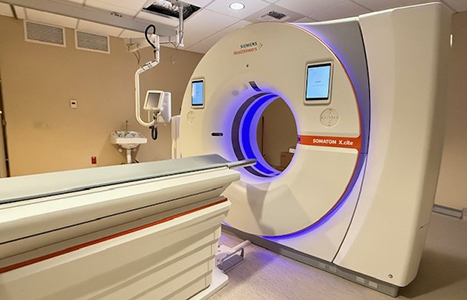Reprinted from March 9, 2010 by request
As I drove past Chinook Elementary School in southwestern Washington State last weekend, I suddenly remembered the wet night that my gentle Dad burst angrily through the front door, rain dripping from his 1950s hat.
“What’s the matter Dad?” My college-age brother asked.
“That darn car was stuck in first gear all the way from Tacoma to Seattle!” he said. This was before I learned to drive, and didn’t understand how being forced to go a maximum of 15 miles an hour was such a handicap. He got home safely, didn’t he? Our 1956 two-tone Chevy, with the doors on the driver’s side held shut with wire, hadn’t quit on him, it just slowed him down on his way home from a job.
Dad was frequently unemployed in those days, and having a job – or a car – at all was the big deal, not how fast it went or how good it looked.
I imagined similar thoughts were put before the people of Chinook some years ago, while the school was still populated with elementary students. And it seems as if similar thoughts are concerning people on Orcas Island who are faced with a sizable school district bond.
People say we should only repair what’s broken: the plumbing in the elementary school, the heating that wastes tens of thousands of dollars each year, things like that. We shouldn’t replace buildings that were built 30 years ago with new buildings, they say. We should fix them.
That would be like replacing the ‘56 Chevy’s doors (at sizeable cost) without addressing the larger transmission issue; it would mean spending thousands of dollars on a “fix” rather than $30 a month for a decade to drive a car that is more fuel-efficient, more road-worthy, and more of a “tool” to enable my Dad to work.
Most of the “new” construction is actually replacement construction for school buildings that engineers have told us need to be upgraded for safety reasons; the new construction is also to provide a building for the vocational (Career and Technical) education, or CTE, classes that prepare our students for careers in the growing fields of applied physics, computer technology, marine technology, agricultural, construction and carpentry trades.
Maintenance of the school buildings is an issue. And maybe my Dad’s car would have run better if its previous owners had kept up oil and transmission fluid levels. But they didn’t, and in the meantime, the cost of fuel increased, the efficacy of the heating and cooling systems improved, and the regulations on pollutant emissions increased.
The School District had years of cutting maintenance expenses and deferring maintenance in order to balance the school’s general budget (in 2006, there was only $5,000 in the district’s reserve fund – it is now at $341,000, up $100,000 from last year). What this means is that the OISD Board, assisted by the Orcas Island Education Foundation (OIEF), and the Budget Advisory Committee (BAC) have rebuilt the district’s financial structure responsibly and responsively.
Deferred maintenance, like a dangerously low reserve fund, will no longer be considered as a policy option by this school district board. The proposed school bond provides the capital (investment) outlay for a contractual maintenance plan as well as for energy savings and efficiency.
The bond, as currently written by OISD Board resolution, calls for the authority to request funds in two stages. This means that the Board may ask for the full amount they’re authorized to ask for in the first stage, but then they may well ask for a lesser amount in the second phase.
It’s been known to happen that capital projects come in under-budget: the replacement Tacoma Narrows Bridge was completed last year, under budget and before deadline; the oil field fires in Iraq following the first Persian Gulf War in the 1990s were extinguished far ahead of what was thought possible. Here on Orcas, we do the “impossible” rather frequently – purchasing Turtleback Mountain, outlawing jet skis and plastic bags, producing healthy reserve funds for our institutions, building outdoor stages with local effort, and operating cemetery and port districts at below the authorized tax dollars.
New construction business models have introduced the General Contractor Construction Manager (GCCM), rather than the design-bid-build process in which the lowest bidder (who may well be an off-island company) contracts for the entire job. In the GCCM method, the contractor is there throughout the building process to help mitigate issues in design.
Board President Scott Lancaster has been researching the GCCM model for the last five years. The Board hopes to write into the contract that local contractors have priority consideration, if not for the General Contractor position, but also for the sub-contracting jobs that the bond pays for. This is why the bond has been described as a “Local Stimulus” investment that will employ islanders.
And for those over age 61 and those disabled who will “never” see an increase in their income, if that income is below $35,000, our County’s Treasury provides that their property value will be “frozen” and they can be exempted from paying any of a new bond amount. (See accompanying story “Low-income Seniors and Disabled Qualify for Bond ‘Tax’ Exemption”).
Did you know that the kids at school are building new cars? Julian Glasser, class of ’09, retrofitted an engine to use biodiesel fuel. This year, another senior is working to re-define the car as our primary mode of transportation.
This week, Kari Schuh, the Career and Technical Education Director, and Superintendent Barbara Kline are meeting with State school officials to discuss local “satellites” of vocational instruction centers. Maybe within our lifetime, Orcas students will “invent” a new mode of transportation that ends our dependence on foreign oil and high prices at the gasoline pump, much as Lakeside School students Paul Allen and Bill Gates, Jr. built a new information communications system in the last generation.
That will never happen, you say? I remember my Dad saying, “I’ll never have a car that works,” and my Mom replying, “Never is a long, long, time.”
My Mom also went to work the following year, and two years later, bought one of those weird little Volkswagen “Bugs” – on time. She considered it an investment in her livelihood, and in our future.
**If you are reading theOrcasonian for free, thank your fellow islanders. If you would like to support theOrcasonian CLICK HERE to set your modestly-priced, voluntary subscription. Otherwise, no worries; we’re happy to share with you.**









This is really a well written editorial!
Thank you Margie for framing this in real terms that we can all relate to.
Most excellent!
Thank you.
Well put, Margie. Our kids all deserve a safe school building where they can reach their full potential.
It always amazes me that well meaning intelligent people when confronted with any facts that do not conform to their currently held beliefs on a subject basically respond with “Don’t bother me with the facts. I have made up my mind”. The real question is if these people who have completely misread the angst in the community about the money have misread the planning for the entire project. Come out with a bond for the most needed single item and the community will support it. Come back in 2014 when the huge fire levy will expire and certainly be reduced significantly and the public will support the balance as their taxes will not be going up as the fire levy will be cut a lot.
Ahhh… and there-in is the problem.
There is a distinct division between those of us who have read the facts (which I have… over 1000 pages of reports, studies and scientific findings) and those of us who simply do not want to pay more taxes.
If a voters’ stance is to simply vote down taxes… then that position cannot reconcile with the facts. A proper assesment of the facts would yield that based on sound economic analysis the cost to run portions of the bond at different points in time in the future will undoubtedly cost the voters of Orcas Island more. That factual arguement can be made without even discussing the safety concerns that should also be included in the “factual” analysis.
If we want to have a factual arguement, let’s make sure we are dealing in the facts and in the end we will rely on the wisdom of the Orcas Island voters to help guide the future of the school.
And then there’s this about the new Peace Health Hospital on San Juan (a $30 construction project:)
“Mahlum Architects is expected to complete the design for Peace Island Medical Center by January 2011. Permitting should be done by April 2011, and construction, overseen by Seattle-based Howard S. Wright Constructors, is slated to be finished by July 2012, with the first patient being admitted that August…
Anderson said at a public hearing on July 15 that the project will generate $500,000 in permit fees, $4 million paid to local contractors, $10 million in first-year revenue, and will create 24 new full-time-equivalent jobs and an annual payroll of $4 million.”
So when you talk about the “angst in the community about the money”…consider that we could have a similar impact on Orcas.
FYI — Mahlum is the firm selected to do the school project should it happen
Regarding my last post. It should have said $30 MILLION construction project. That would be a lot of economy generated by $30…